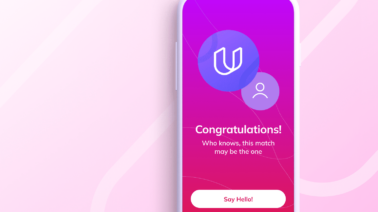This post was last updated on September 8, 2021.
With nearly 1.9 billion websites across the globe, it’s not surprising that employers are always looking to hire skilled UI and UX designers.
UI Design and UX Design are commonly confused roles and while the titles sound similar, the actual jobs vary quite a bit.
Each of these roles has its own specific nuances, but both are in great demand. In fact, in 2019 UX and UI designers were ranked as one of the highest-paying entry-level jobs in the tech industry.
With demand high and the chance to make an impact on individual users, there are existing opportunities for those wanting to pursue this career field. They’ll just need to know which stream is right for them to pursue.
Let’s take a look at UI vs UX.
What’s UI?
UI stands for “user interface” and includes anything that an end-user interacts with while using software or any kind of digital product. Anything that appears on a screen—buttons, menus, icons, font, color, etc—is a part of the user interface.
User interfaces have been around for as long as computers have, except user interfaces in those days were just a simple command-line where the user would type in code and receive textual output. In the 1980s, the first graphical user interface (GUI) was invented which allowed people who didn’t know how to code to use computers.
These days, user interfaces are designed for computers, websites, mobile devices and apps, and even virtual reality.
What Do UI Designers Do?
UI Designers use their artistic ability and marketing sense to create stunning and intuitive designs for websites, tablets, and other devices. Their main goal is to visually lead the user through whatever task they are trying to accomplish by intelligently leveraging shapes, colors, spacing, alignment, and typography.
For example, a UI Designer might decide to make the color of a “Start” button green and a “Stop” button red to help signify what the buttons do. The particular shade of each color that they use will be carefully selected to keep the look on-brand.
What’s UX?
UX stands for “user experience” and includes everything the customer experiences while trying to accomplish a task in software or a digital product. Under the UX umbrella, you may hear the term lean UX, which is a simplified version of the UX process that focuses on streamlining and focusing on essentials.
Don Norman coined the term “user experience” in the 1990s, claiming that it “encompasses all aspects of the end-users interaction with the company, its services, and its products.” You might note the lack of the word “digital” in that description. This is because user experience goes beyond digital-only products and can be applied to anything, from toasters to backpacks.
Regardless of whether the user experience is referring to a desk lamp or a mobile phone app, the overarching purpose is to focus on the way the customer interacts with the product and how it makes them feel.
What Do UX Designers Do?
UX Designers use a combination of quantitative and qualitative data, along with usability know-how to create intuitive workflows for websites, tablets, and other devices. Their main goal is to ensure that they deliver a product that seamlessly meets the user’s needs.
For example, imagine a customer is attempting to check out their cart on an online retailer’s website. The UX Designer will think about the number of button clicks that it takes, how easy the task is to figure out, and the overall feelings of the customer (be that frustration or satisfaction) during the process.
UX Designers frequently experiment with different flows in user experience (via A/B Testing) to back up their choices with data and better understand the end-users. UX Design is an iterative process and making incremental improvements is part of the job.For more on how to become a UX Designer, check out this blog post for specifics.
What are the Main Differences Between UX & UI Designers?
When looking at UI vs UX design, it’s important to know the key differences between the two.
UI Designers create the actual elements that the users interact with while using the product. Think: Buttons, icons, menus, colors, etc.
UX Designers create the experience that the user has while interacting with the product. Think: usability and ease while using a product.
UI Design is all about the look, while UX Design is all about the feel.
How Do UX & UI Designers Work Together?
When a new product or feature is ready to be worked on, UX Designers first spend time thinking about the user—what tasks do they need to be able to accomplish, what is their end goal, how should they feel—and then eventually create wireframes as a low-fidelity version of the product (or feature).
Next, UI Designers create the overall look of the interface, as well as the individual elements, giving it a cohesive design that helps to visually guide the user.
In other words, the UX Designer thinks in the big picture by mapping out how the user will step through the product, and then the UI Designer works on all the details to create a visually pleasing and cohesive experience.
Deciding to Pursue UI vs UX
If you’re trying to decide which route to pursue with your education and career path, the answer depends on what kind of design work you prefer. If you are more artistically creative, love to make visual art, and have a knack for branding, then UI Design might be a good choice for you. If you are more analytical, love data and user research, and have a depth of customer empathy, then UX Design could be a good choice for you.
Whichever route you choose to pursue, you’ll need a design portfolio to showcase to potential employers. Udacity’s UX Designer Nanodegree program teaches students how to design impactful user experiences for products in today’s digital world. You’ll have the opportunity to build a portfolio that showcases your ability to transform user research to high-fidelity interactive designs.



